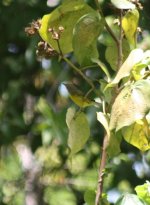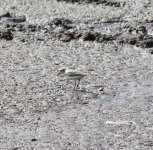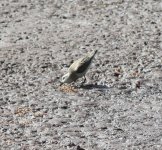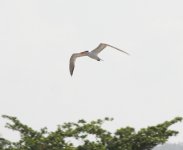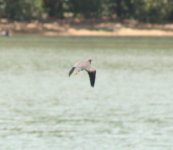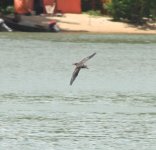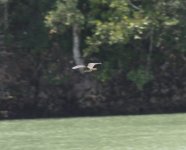I recently returned from The Dominican Republic. It was an amazing trip filled with plenty of fauna. Most of the birds I saw whilst there were considerably easier to identify than I had first imagined. However despite the range of bird photographs online and bird books I brang with me, I was unable to identify several birds and lots of anoles. I was hoping some one had knowledge on Hispaniolian birds or atleast Caribbean birds and could help me out with the folloiwng. The grey and yellow warbler like bird was present in 'The indigenous Eyes Ecological Park, Punta Cana' above a clear water lagoon. The Sandpiper was located on a locals beach in Samana Bay.
I can't describe behaviour much as the warbler like bird was in forest like mangrove area and only briefly showed. The sandpiper photographs describe its behaviour well enough. Could it be a Semipalmated Sandpiper?
I added the other two birds to clarify my opinion, however I believe the large crowned Tern is a Royal Tern. I am unsure whether the other yellow legged wader is a Lesser or Greater Yellowlegs. Both were in the Los Haitises National Reserve around small islands.
Any opinions would be appreciated. Many Thanks in advance
I can't describe behaviour much as the warbler like bird was in forest like mangrove area and only briefly showed. The sandpiper photographs describe its behaviour well enough. Could it be a Semipalmated Sandpiper?
I added the other two birds to clarify my opinion, however I believe the large crowned Tern is a Royal Tern. I am unsure whether the other yellow legged wader is a Lesser or Greater Yellowlegs. Both were in the Los Haitises National Reserve around small islands.
Any opinions would be appreciated. Many Thanks in advance




